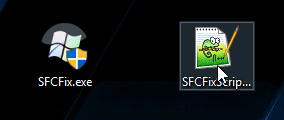Step 1:
WARNING! The following fix is specific to the user's system in this thread only. No one else should follow these instructions, as it could damage your system.
Step 2:
Perform the instructions in message #243 again.
WARNING! The following fix is specific to the user's system in this thread only. No one else should follow these instructions, as it could damage your system.
- Download the attachment SFCFix.zip and save it on your desktop.
- Save any work you have open, and close all programs.
- Drag the SFCFix.zip file over the SFCFix.exe executable and release it.

- SFCFix will launch, let it complete.
- Once done, a file will appear on your desktop, called SFCFix.txt.
- Attach that file to your next reply.
Step 2:
Perform the instructions in message #243 again.
